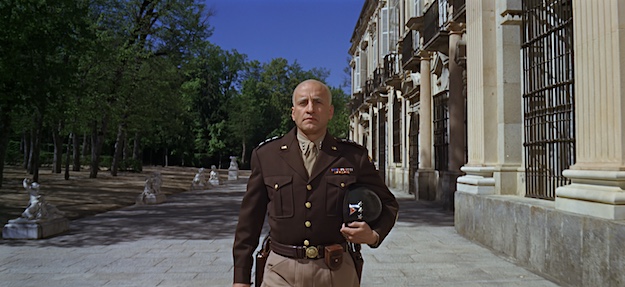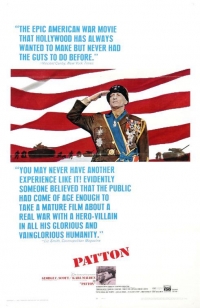THE Q&A
Steven Jay Rubin is the author of Combat Films: American Realism, 1945-2010 (McFarland, 2011).
Steven’s other books include The James Bond Films: A Behind-the-Scenes History (Random House, 1981), The Complete James Bond Movie Encyclopedia (McGraw-Hill, 2002), The Twilight Zone Encyclopedia (Chicago Review, 2017), and (with David Lee Miller and illustrations by Elizabeth Baddeley) The Cat Who Lived with Anne Frank (Philomel, 2019). He has also written for Cinefantastique, Cinema Retro and Los Angeles Times.
Rubin kindly spoke to The Bits about the virtues and legacy of Patton.

Michael Coate (The Digital Bits): How do you think Patton should be remembered on its golden anniversary?
Steven Jay Rubin: Patton was one of the great biographical films of all time, which thanks to the enormous contributions of screenwriters Francis Ford Coppola and Edmund North, and the spot-on characterization of actor George C. Scott, brought to life one of the most interesting and intriguing military figures in all history. It was also a war film that debuted at the height of the Vietnam War, uniting both doves and hawks in their praise.
Coate: What do you remember about the first time you saw Patton?
Rubin: First, it was the last film I saw with my father, and I remember being blown away by the opening speech (“No bastard ever won a war by dying for his country...”). I thought the film was truly fascinating, giving me cool insights into Patton and a new awareness of military history. Who ever heard of the Battle of El Guettar? Or Patton’s ability to pivot his army so quickly during the Battle of the Bulge? Or the reverberations of the slapping incident in Sicily?
Coate: In what way is Patton a significant motion picture?
Rubin: All Academy Award Best Pictures are significant in their own way, but Patton stands out for blending an intimate characterization with epic battle scenes. It also featured a number of creators bringing their A game to the table: actor George C. Scott, director Franklin Schaffner, writers Francis Ford Coppola and Edmund North, composer Jerry Goldsmith, and many others.

Coate: How do you think the film compares to its source material?
Rubin: I believe that Patton is very close to its source material. In his original draft, Coppola culled from Patton’s actual speeches to fashion the amazing opening to the film. Producer Frank McCarthy, a World War II general himself, was determined to keep the story accurate.
Coate: What did you think of George C. Scott’s performance, and where does it rank among his body of work?
Rubin: George C. Scott’s performance was stunning. He completely disappeared into the character — which, by the way, was a hallmark of Scott’s work. He was the consummate chameleon. I loved his interaction with Karl Malden’s Omar Bradley who starts out as his subordinate in North Africa and Sicily and then becomes his superior after Normandy. Their interplay was wonderful. The writers’ decision to hit home the point that Patton also believed in reincarnation and that he was a military man in previous lives was also a genius decision. I believe that Patton is Scott’s finest role, among many.
Coate: In what way was Franklin J. Schaffner an ideal choice to direct Patton, and where does the film rank among his body of work?
Rubin: I’ve always referred to Schaffner as a modern DeMille — a director comfortable painting on a big canvas. Certainly, after seeing Planet of the Apes and The War Lord, producer Frank McCarthy came to the conclusion that he was perfect for Patton. The original director, the great William Wyler, was forced to exit the project when his doctor informed him that the shoot in Spain would be too rigorous. I would also say that this was Schaffner’s greatest film.
Coate: Where do you think Patton ranks among epic bio pics?
Rubin: Patton is the best epic bio pic ever produced — A+ at every level.
Coate: What is the legacy of Patton?
Rubin: Patton will always be studied as a classic approach to an historical character, combining epic historical incidents with intimate moments that reveal the character of a complicated man.
Coate: Thank you, Steve, for sharing your thoughts about Patton on the occasion of its 50th anniversary.
--END--
IMAGES
Selected images copyright/courtesy Robert Morrow collection, 20th Century-Fox Film Corporation, 20th Century Fox Home Entertainment.

SPECIAL THANKS
Raymond Caple, Bill Kretzel, Mark Lensenmayer, Stan Malone, Robert Morrow, Steven Jay Rubin, Vince Young, and an extra special thank-you to all of the librarians who helped with this project.
-Michael Coate
Michael Coate can be reached via e-mail through this link. (You can also follow Michael on social media at these links: Twitter and Facebook)






